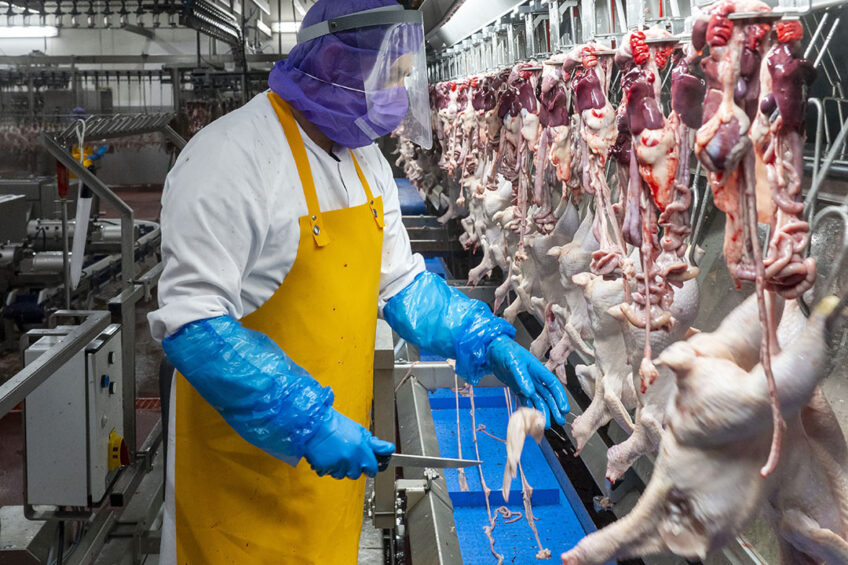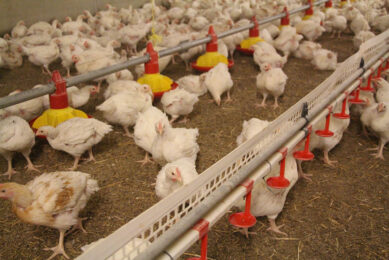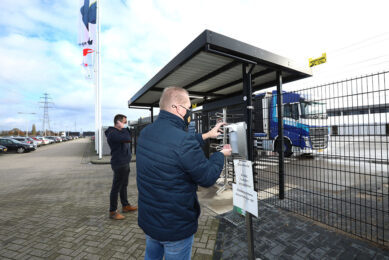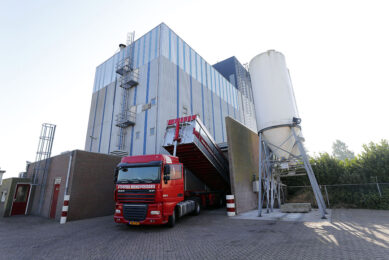Some supply, labour issue in poultry sector following Covid

The global poultry market has recovered significantly from the Covid-19 pandemic, but there are ongoing oversupply and labour issues in parts of the world, according to Rabobank.
Presenting its latest poultry quarterly, the bank said most regions are performing at breakeven levels or enjoying profitable conditions, with the reopening of economies in Europe and the Americas helping the market recover and boosted global trade.
The outlook remains positive, with ongoing strong demand and restricted supply albeit with high feed prices. Further increases in trade volumes are expected, driven by the recovering food service sector.
New bid to end cages for UK laying hens launched
Moves to introduce legislation outlawing cages for laying hens in the UK have successfully entered parliament. Read more…
Nan-Dirk Mulder, Animal Protein senior analyst at Rabobank, said the wild card for the outlook remained Covid-19: “Depending on how it develops, Covid-19 could shake up markets and supply discipline in some more fragile places, like Europe and Southeast Asia.”
Shortage of drivers, staff
In Southeast Asia, the delta Covid strain is challenging the local situation while in parts of Europe, notably the UK, the combination of Covid and Brexit has led to a range of ongoing issues, including a shortage of delivery drivers, lack of staff on poultry units and the ’pingdemic’, which earlier this summer caused chaos to some meat firms with thousands of staff having to self-isolate.
The UK government has issued a new visa allowance for more than 5,000 temporary seasonal poultry workers to process poultry and turkeys in the run-up to Christmas, alongside saying 5,000 HGV drivers can enter the UK to work. The NFU described the move to allow more immigrant workers to support the sector as “a U-turn for ministers who had repeatedly said that they did not want to relax Britain’s stricter post-Brexit immigration laws.”
A recovery in global poultry trade
Global trade saw a strong recovery in quarter 2 with trade volumes at a historical high, which has been particularly beneficial to Brazil and the US. Exports from Europe, Russia and Ukraine have dropped due to avian influenza and a slowdown in Chinese imports. Global trade issues remain fragile, however, as AI is still disrupting trade flows. China should break even, but the foodservice sector is weak, with wings and feet imports also down 30%.
Revised UK welfare in transport measures come under fire
The UK government has been criticised for failing to adopt a science and evidence-based approach over its controversial welfare in transport consultation. Read more…
“In terms of market outlook, we expect strong demand for the remainder of 2021, despite these trade issues. Most markets are operating under tight supply conditions with improved foodservice demand. This will maintain strong trade flows. The key wild cards, beside the trade issues, are AI, Covid-19 developments, labour and container availability. The container availability issue could potentially restrict poultry trade volumes later in the year. If so, it will be an upward factor for prices,” he added.
Supply issues and feed prices
Restricted supply in many areas due to labour issues is set to continue due to the tight Covid-19 requirements and immigrant laborers staying at home, said Rabobank. Feed prices, which have been very high, are unlikely to change. There is set to be some increase in wheat prices due to weaker availability from the EU and Russia. Soymeal prices have been dropping due to rationalising of demand and a more oil-focused approach among crushers.
Moving forward, the return of wet weather – after a year of drought – in key producer Brazil, which has enjoyed strong local demand with financial aid, will be key as September should see the start of soybean plantings. A possible return of La Nina conditions in the fourth quarter could mean further dryness ahead. Meanwhile, in the US, investors are eagerly awaiting soy and corn harvest results.












